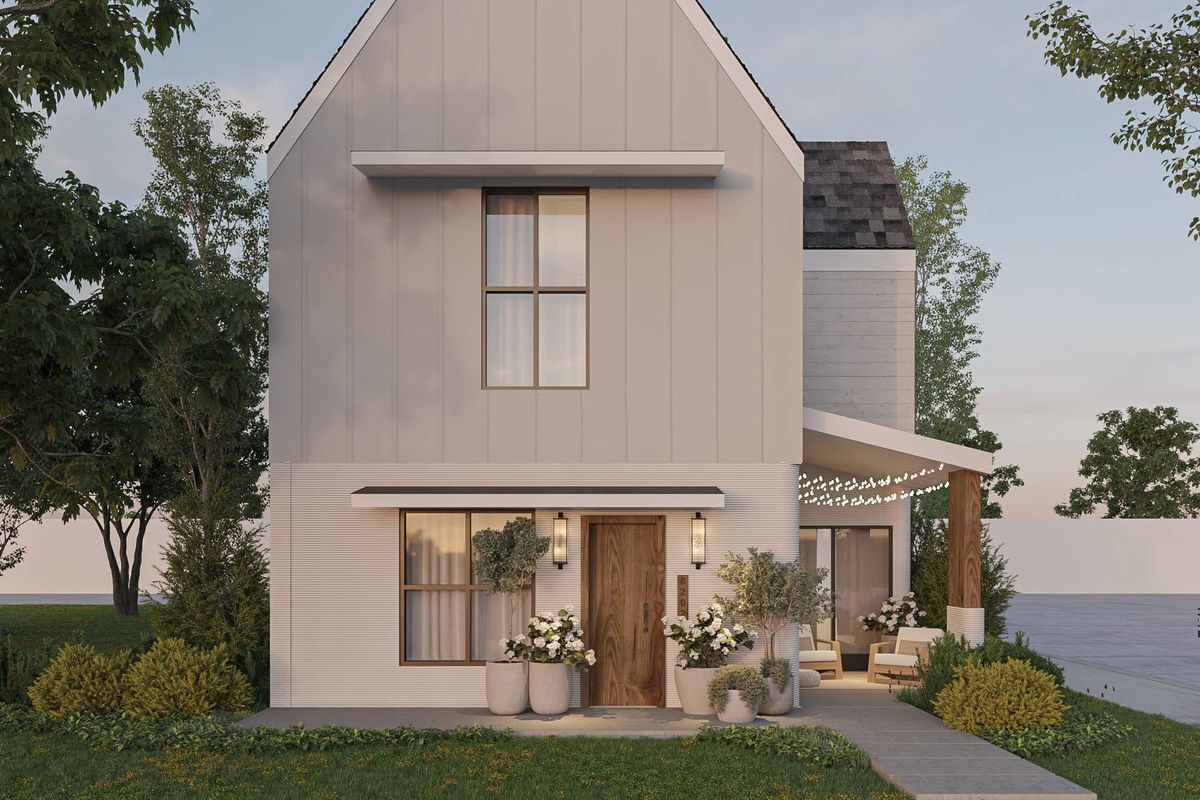First large-scale affordable housing project of 3D-printed homes rises in Houston
Building Blocks
What’s being promoted as the world’s first large-scale affordable housing development built using 3D technology is taking shape in Houston.
Houston-based 3D construction company HiveASMBLD has teamed up with Houston-based Cole Klein Builders and the City of Houston on the Zuri Gardens project. Located near Hobby Airport on Martindale Road, the first 3D-printed home at Zuri Gardens is set to be completed in October.
“Zuri Gardens was born from the frustration of watching hardworking families get priced out of safe, resilient housing. We knew there had to be a better way — and with this project, we’re proving that there is,” says Vanessa Cole, co-founder of Cole Klein Builders.
“By combining visionary design, advanced construction technology, and powerful partnerships, we’re building more than just homes — we’re creating a blueprint for the future of equitable homeownership in Houston and beyond.”
The development is being created for households earning up to 120 percent of the median income in the Houston metro area. For a four-member household in the Houston area, the 120 percent limit in 2025 is $121,300, as set by the U.S. Department of Housing and Urban Development (HUD).
The 13-acre Zuri Gardens development will feature 80 energy-efficient homes averaging 1,360 square feet. Prices will be in the mid to high $200s. The homes will qualify for up to $125,000 in down payment assistance from the City of Houston.
HiveASMBLD will print two different home designs, each with two-bedroom and two-and-a-half bathroom configurations, along with an office/flex space and a covered patio.

“The community we envision for Zuri Gardens is modern, safe, and one that residents will be proud to call home. When completed using HiveASMBLD’s innovative technology, this 3D-printed multifamily community will exemplify the future of residential affordable living,” says Timothy Lankau, founder and co-CEO of HiveASMBLD.
Developments like Zuri Gardens are popping up around the country.
“3D-printed homes are revolutionizing the construction industry by making home builds faster, cheaper, and more sustainable,” according to The Zebra, an Austin-based insurance marketplace. “In less than 24 hours, 3D printers can print the foundation and walls for a small home at a fraction of the cost of typical construction.”
U.S. News & World Report explains that unlike a traditional home, a 3D-printed home is printed in place, “just like you’d print a knickknack on your home 3D printer. Layer by layer, proprietary concrete blends are used to build the wall systems of the home in any type of design that a builder can imagine.”
Texas is home to several trailblazing 3D-printed projects.
In the U.S., the first 3D-printed home was built in 2018 in Austin, and the first 3D-printed multistory home was completed in 2023 in Harris County’s Spring Branch neighborhood. Meanwhile, the world’s largest neighborhood of 3D-printed homes is located in the Austin suburb of Georgetown.
Grand View Research predicts the global market for 3D-printed construction will approach $4.2 billion by 2030.
---
This article originally appeared on CultureMap.com.





